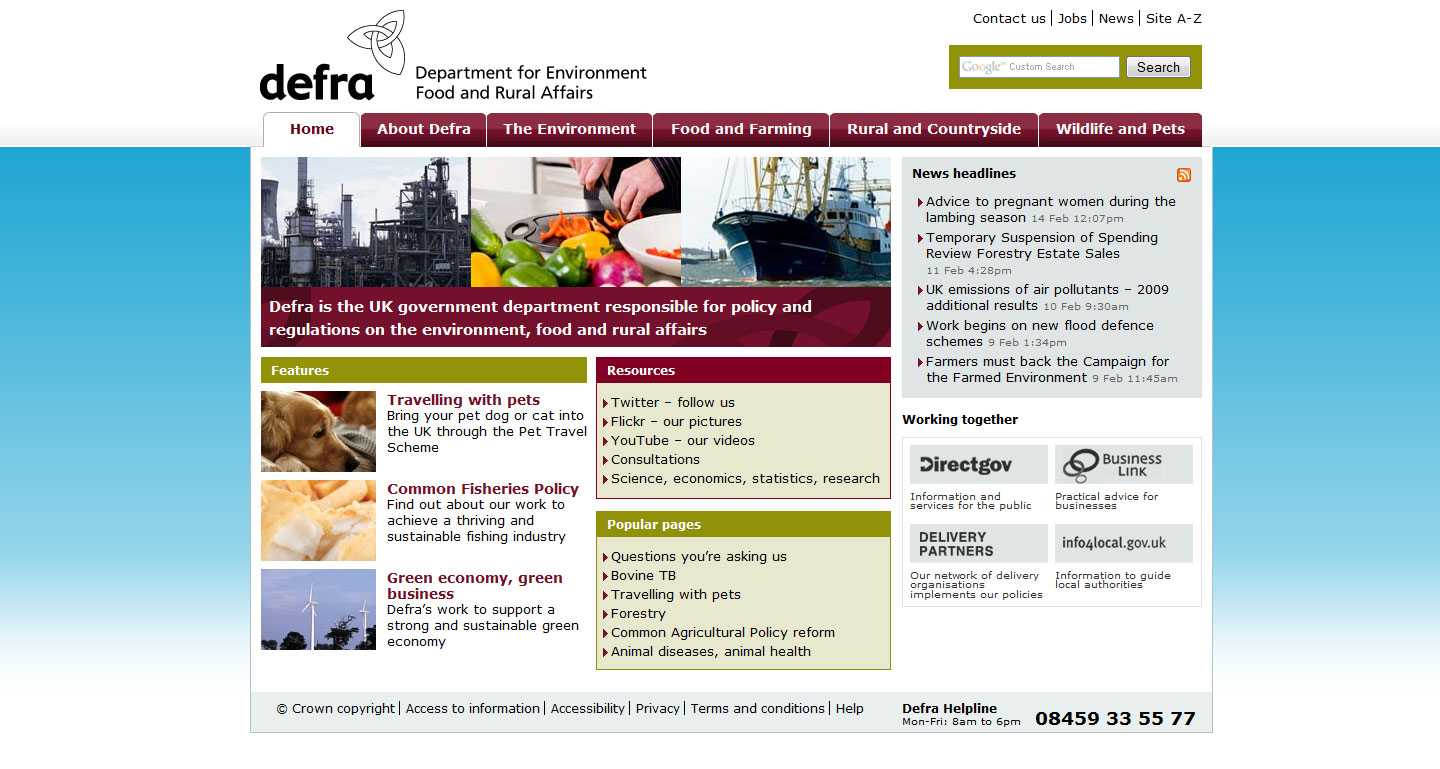

Undertaking the task of updating the Department for Environment, Food & Rural Affairs (DEFRA) website posed a formidable challenge due to its extensive range of resources and functionalities. Additionally, the website's status as a government platform necessitated exceptional accessibility standards, further increasing the complexity of the project.
The primary objective was to modernise the DEFRA website, enhancing its design, usability, and performance while ensuring compliance with stringent accessibility guidelines. The existing website housed an immense amount of information, including policies, reports, research, and resources related to the environment, food, and rural affairs.
To tackle this challenge, a meticulous approach was employed, involving a comprehensive assessment of the website's structure, content, and user interface. Collaborating closely with DEFRA representatives, I aimed to streamline the website's navigation, making it intuitive and user-friendly for individuals seeking specific information or services.
In addition to usability, compliance with accessibility standards was of paramount importance. The website needed to adhere to established guidelines, such as the Web Content Accessibility Guidelines (WCAG), ensuring that individuals with disabilities could easily access and navigate the website's content. This involved implementing features like alt tags for images, clear headings and labels, and keyboard accessibility.
Considering the vast array of resources and functionalities within the DEFRA website, careful planning and organisation were key. Content categorisation, information architecture, and search functionality were strategically implemented to facilitate efficient access to resources. User testing and feedback loops played a vital role in refining the website's structure and ensuring a seamless user experience.
The update also presented an opportunity to enhance the website's performance and responsiveness. Optimisation measures were implemented, including streamlined code, image compression, and caching techniques, to improve loading times and overall performance.
Throughout the project, collaboration and open communication with DEFRA representatives were paramount. Their insights and feedback were invaluable in guiding the development process, ensuring that the revamped website aligned with their objectives and met the needs of diverse user groups.
The result of the update was a modernised DEFRA website that offered an enhanced user experience, improved accessibility, and efficient access to a wealth of information and resources. The user-friendly design and streamlined navigation empowered individuals to easily locate the information they required, contributing to increased engagement and knowledge sharing in the areas of environment, food, and rural affairs.
By successfully tackling the challenge of updating the DEFRA website, my aim was to support the department in fulfilling its mission of sustainable environmental practices, food safety, and the welfare of rural communities. The revamped website served as an effective platform for disseminating information, engaging stakeholders, and driving positive change in these critical areas.